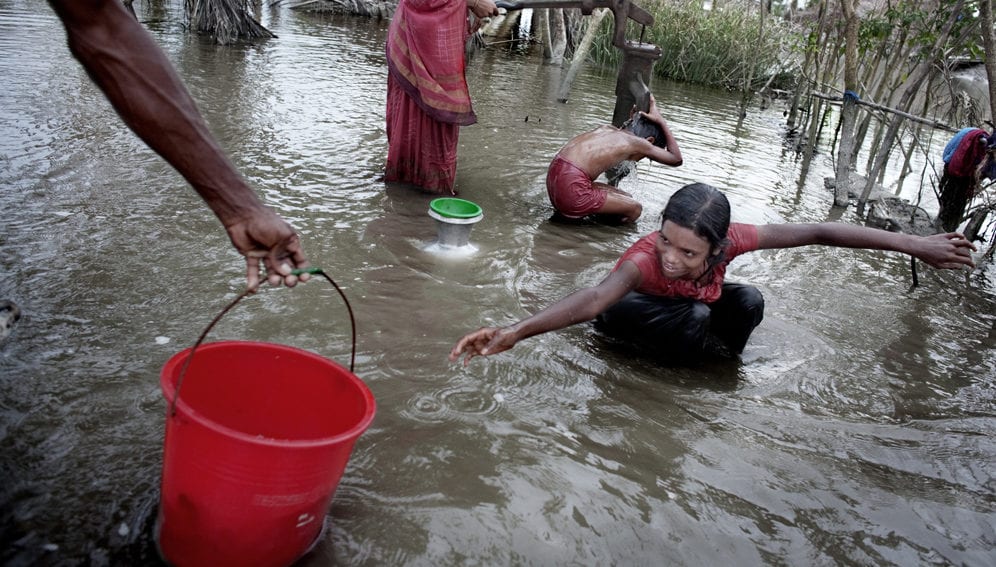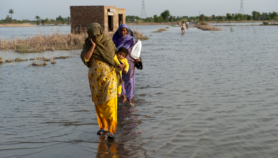By: Crispin Maslog
Send to a friend
The details you provide on this page will not be used to send unsolicited email, and will not be sold to a 3rd party. See privacy policy.
COP24 teeters between hope and despair over whether the Paris Accord goals will be met on time.
The goal is to turn the promises of Paris into an enforceable programme of action to halt global warming.
This objective is foremost in the minds of heads of state and representatives from roughly 200 countries gathered in Katowice, Poland for the 24th Conference of Parties (COP24) to the UN Framework Convention on Climate Change from 2 to 14 December.
“The Conference mood now teeters between hope and despair that the ambitious goals of the Paris Accord may not be met on time.”
Crispin Maslog
COP24 is crucial because 2018 is the deadline set by scientists for the 2015 Paris Agreement signatories to adopt a workable programme of action to reduce carbon poisoning of Mother Earth—or face the consequences.
Only last month (November), the UN Intergovernmental Panel on Climate Change (IPCC) warned that the world has a narrow 12-year window to halve global greenhouse gas (GhG) emissions.
“Between 2014 and 2016, global emissions remained relatively flat, giving negotiators hope that the decades-long trend of rising emissions was about to reverse. But after three years of stagnation, global carbon dioxide emissions rose again in 2017, reaching a record high of 53.4 gigatons of carbon dioxide equivalent. To meet the 1.5 degrees Celsius target, the world needs to collectively bring emissions down by more than half in the next 12 years,” said IPCC. (1)
This warning follows the latest World Meteorological Organisation report that “levels of heat-trapping GhGs in the atmosphere have reached another new record high . . . with no sign of a reversal in this trend, which is driving long-term climate change, sea-level rise, ocean acidification and more extreme weather”. (2)
The UN organisers, aware of the high stakes riding on this Conference, invited the world public to participate by creating a “People’s Seat” for them alongside global leaders. To join the conference in real time, people are asked to tag their thoughts with the hashtag #TakeYourSeat on social media. (3)
At the opening session, eminent mass communicator and naturalist David Attenborough delivered the “People’s Address” where he described the initiative as one designed to give people knowledge and power and one that came as the result of new activism using social media.
Attenborough, who started his career as a BBC TV presenter, was considered in a 2014 poll to be the most trustworthy public figure in Britain. Attenborough is also said to be the most traveled person in recorded human history and the oldest person to have ever visited the North Pole. But perhaps the most fitting tribute of all is that several species of plants, insects and birds have been named after him.
Between hope and despair
The Conference mood now teeters between hope and despair that the ambitious goals of the Paris Accord may not be met on time. To recall, these goals are: (3)
First, to limit global average temperature rise to well below 2 degrees Celsius and push harder to peg global warming to 1.5 degrees Celsius.
Second, to speed up financing for climate action, including the annual US$100 billion goal from donor nations for developing countries.
Third, to put national climate plans in place by 2020, with self-determined goals and targets.
Fourth, to protect natural ecosystems that absorb GhGs, including forests.
Fifth, to strengthen resilience and reduce vulnerability to climate change.
Sixth, to finalise a work programme to implement the agreement by 2018.
Reasons to hope
There was optimism at the 2015 Paris Conference and at COP23 in Fiji last year that that these goals will be met. As of today, there are still reasons to hope: (3)
First, the Paris treaty has been ratified by 184 parties, and entered into force in November 2016.
Second, at least 57 countries have managed to bring their GhG emissions down to the levels required to curb global warming.
Third, there are at least 51 “carbon pricing” initiatives in the works; charging those who emit carbon dioxide per ton emitted.
Fourth, in 2015, 18 developed countries had committed to donating US$100 billion a year for climate action in developing countries. So far, over US$70 billion has been mobilised.
Fifth, some countries, like Argentina, Indonesia and Morocco, have already adopted more ambitious GhG reduction targets since the Paris Agreement came into force. Twenty-three countries, including Canada, UK, Fiji and the Marshall Islands, have announced their intention to increase their NDCs (Nationally Determined Contributions) in 2020.
On the other hand, the pessimists have reasons to despair.
First, the US has withdrawn from the Paris Accord. President Trump, when confronted by the US Climate Change Report prepared by 1,000 American scientists from 300 science organisations last month (November), curtly said: “I don’t believe it.” He had decided last year to cancel US$2 billion in promised funding.
The US reportedly will set up a side-event at the climate summit promoting fossil fuels to highlight the benefits of technologies that more efficiently burn fuels including coal, according to news reports.
Second, the present commitments by the signatory countries of the Paris Accord will not be enough to bring global warming down to the 1.5 degrees Celsius level unless drastic additional enforceable agreements are made. COP24 negotiators will have to aim for even more ambitious climate goals.
Third, and most important — the US$100 billion question. In 2009, rich countries pledged US$100 billion a year by 2020 to fund climate change projects in developing nations. This fund reached only US$70 billion in 2016.
Bucking the odds
The odds confronting COP24 are intimidating. But we must not lose hope. Let the people raise their voices towards COP24 using #TakeYourSeat. The world’s scientists have given us enough warning about what would happen if the world does not cool down. The stakes are too great for us to fail this time.
[REFERENCES]
1. IPCC Report on Global Warming 2018. Retrieved December 1, 2018
2. WMO Greenhouse Gas Bulletin 2018. Online, retrieved December 2, 2018.
3. EcoWatch. 5 Things to Know Before Next Week's Critical UN Climate Talks
Crispin C. Maslog, former journalist with Agence France-Presse, is an environmental activist and former science professor, Silliman University and University of the Philippines Los Baños, Philippines. He is a founding member and now Chair of the Board, Asian Media Information and Communication Centre, Manila.
This piece was produced by SciDev.Net’s Asia & Pacific desk.














